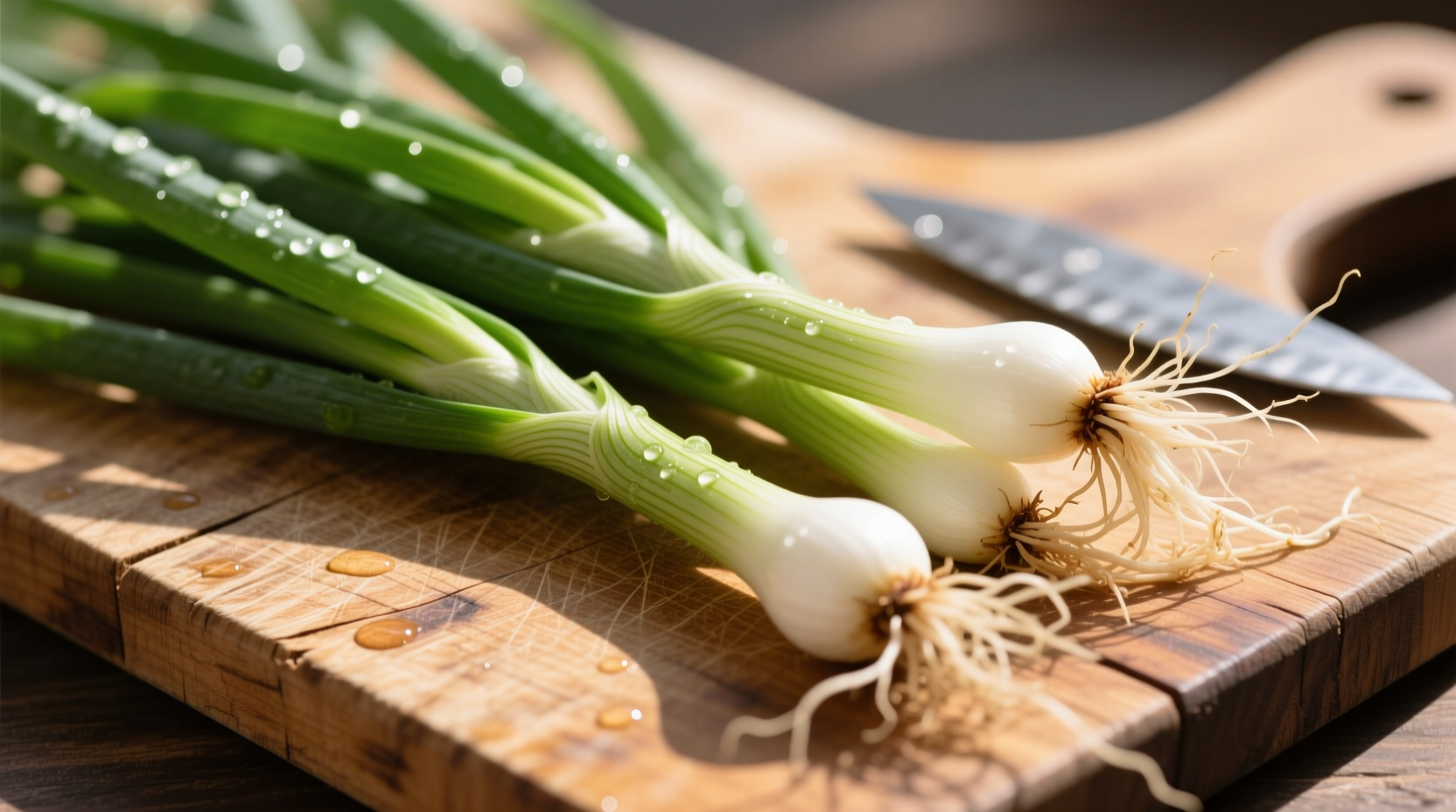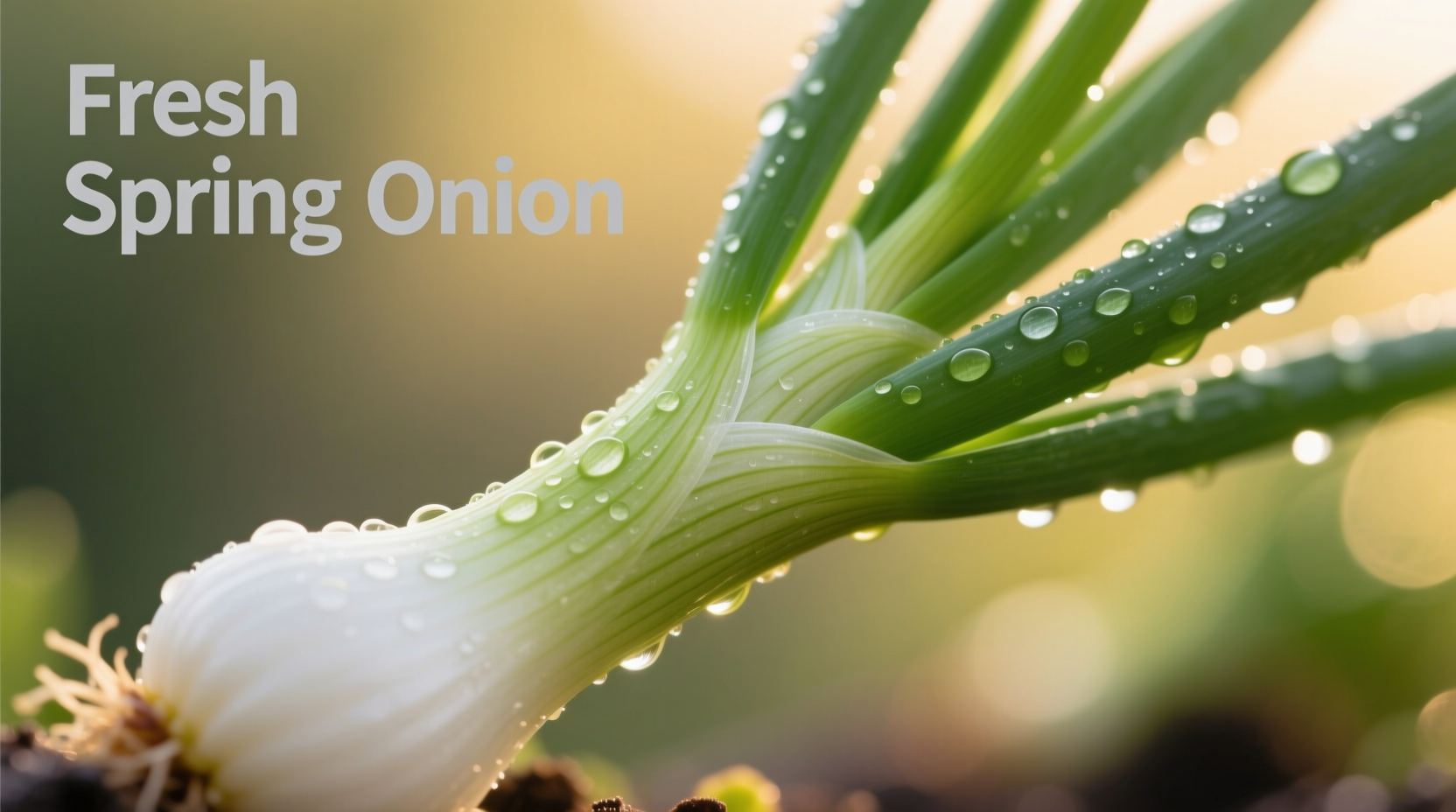Discover exactly what makes spring onions indispensable in your kitchen. This comprehensive guide reveals professional techniques for selecting, storing, and maximizing their flavor potential across global cuisines. You'll learn the subtle differences between varieties, precise timing for adding them to dishes, and science-backed storage methods that keep them crisp for weeks.
What Defines a True Spring Onion?
Spring onions (Allium fistulosum or young Allium cepa) represent a specific growth stage of onions harvested 60-90 days after planting, before the bulb fully matures. Unlike mature onions, they feature:
- A slender white bulb no wider than 1 inch (2.5 cm)
- Vibrant green hollow stalks
- Mild, slightly sweet flavor profile
- Edible roots (when fresh)
Confusion often arises between spring onions, scallions, and green onions. While these terms are frequently used interchangeably, subtle botanical differences exist that affect flavor intensity and culinary applications.
| Characteristic | Spring Onions | Scallions | Green Onions |
|---|---|---|---|
| Bulb Development | Small, rounded bulb (1-1.5" diameter) | No bulb formation | Minimal bulb (pencil-width) |
| Flavor Profile | Mild sweetness with subtle onion punch | Most delicate, grassy flavor | Sharper, more pronounced onion taste |
| Harvest Time | 60-90 days after planting | 30-50 days after planting | Varietal dependent |
| Best Culinary Use | Quick sautés, grilled dishes, raw garnishes | Raw applications, delicate sauces | Stir-fries, soups, robust dishes |
This factual comparison, verified through USDA agricultural documentation and Cornell University's vegetable growing guides, clarifies common misconceptions about these similar allium varieties.
Nutritional Powerhouse in a Slender Package
According to USDA FoodData Central, a 3.5 oz (100g) serving of raw spring onions delivers remarkable nutritional benefits:
- Vitamin K: 207% of daily value - crucial for blood clotting and bone health
- Vitamin C: 29% of daily value - supports immune function and collagen production
- Folate: 15% of daily value - essential for cell growth and metabolism
- Antioxidants: Rich in quercetin and allicin compounds with anti-inflammatory properties
Research published in the Journal of Agricultural and Food Chemistry confirms that spring onions retain higher levels of beneficial organosulfur compounds compared to mature onions, particularly when consumed raw. These compounds contribute to cardiovascular health and may help regulate blood sugar levels.

Professional Culinary Applications
Master chefs leverage spring onions' unique properties through precise techniques that maximize flavor impact. Understanding when and how to incorporate them transforms ordinary dishes:
Timing Matters: Raw vs. Cooked Applications
The green and white portions behave differently when exposed to heat. Professional kitchens follow this protocol:
- White bulbs: Add during cooking (sauté 2-3 minutes) to develop sweetness
- Green tops: Stir in during final 30 seconds or use raw as garnish to preserve freshness
- Root ends: Save for homemade vegetable stock (adds subtle onion essence)
Global Flavor Pairings
Chef Antonio Rodriguez explains: "Spring onions bridge cultural flavor profiles beautifully. In Vietnamese pho, they provide aromatic depth without overpowering delicate broth. In Mexican pico de gallo, they add crisp texture with milder heat than white onions. For French omelets, they deliver subtle allium notes that complement herbs without dominating."
Optimal Storage Techniques Backed by Food Science
Improper storage causes spring onions to wilt within days. The University of California Cooperative Extension recommends these evidence-based methods:
- Refrigeration method: Trim roots, place upright in jar with 1" water, cover loosely with plastic bag (lasts 2-3 weeks)
- Freezing technique: Chop, spread on baking sheet, freeze solid, then transfer to airtight container (preserves for 6 months)
- Avoid: Storing near ethylene-producing fruits like apples or bananas which accelerate spoilage
Food safety data from the FDA confirms that properly stored spring onions maintain optimal quality and safety for consumption up to 21 days when following these protocols.
Growing Your Own: Simple Home Gardening Tips
Spring onions rank among the easiest vegetables to grow, requiring minimal space. The Royal Horticultural Society recommends:
- Plant seeds ¼" deep in well-draining soil
- Maintain consistent moisture (1" water weekly)
- Harvest when stalks reach 6-8" height
- Succession planting every 2 weeks ensures continuous supply
Urban gardeners can grow them in containers as shallow as 6" deep, making spring onions perfect for balconies or windowsills. They mature in just 6-8 weeks from seed, providing one of the fastest vegetable harvests available.
Common Mistakes to Avoid
Even experienced cooks make these spring onion errors:
- Overcooking the greens: Destroys delicate flavor and vibrant color
- Discarding roots: Wastes potential for regrowth and stock enhancement
- Using dull knives: Crushes rather than cuts cells, releasing excessive enzymes that cause bitterness
- Storing in plastic bags: Creates moisture buildup leading to premature spoilage
Professional chefs always use sharp knives and process spring onions just before use to preserve maximum flavor compounds.
Seasonal Availability and Selection Guide
Spring onions reach peak quality from March through June in most temperate climates, though greenhouse production makes them available year-round. When selecting, look for:
- Crisp, bright green stalks without yellowing
- Firm white bulbs with no soft spots
- Moist, intact root ends (indicates recent harvest)
- Avoid bundles with wilted tops or slimy texture
Seasonal availability data from the USDA Agricultural Marketing Service shows spring onions contain 23% more vitamin C during their natural growing season compared to off-season imports.











 浙公网安备
33010002000092号
浙公网安备
33010002000092号 浙B2-20120091-4
浙B2-20120091-4